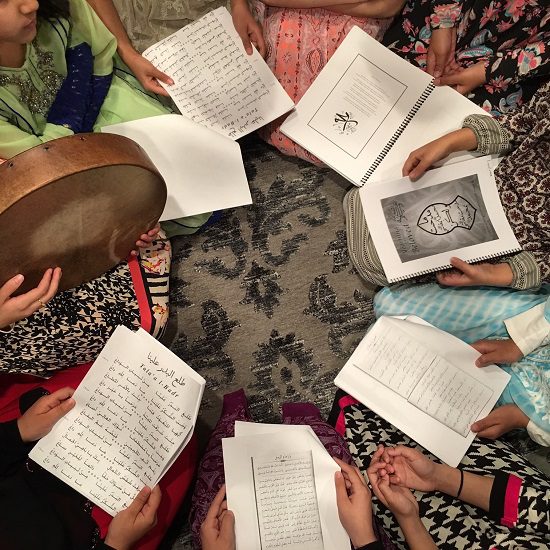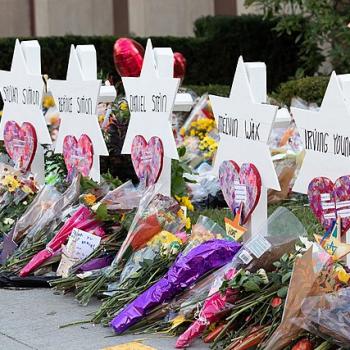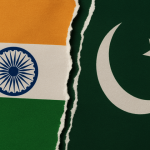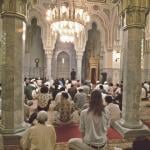 |
|
From farm to feast
|
This week while much of the world prepares for Christmas, millions of Muslims, including several of my friends and family members, are performing Hajj, the annual Muslim pilgrimage to Mecca. At the end of Hajj, financially able Muslims all over the world sacrifice a livestock animal to commemorate Prophet Abraham’s willingness to sacrifice his son. The end of the pilgrimage is then celebrated with a feast called Eid-ul-Adha, or the Feast of Sacrifice. In Pakistan and India, the holiday is called Bakri-Eid or “Goat Feast”. By tradition, Muslims give a third of the meat to the needy, distribute a third among family and friends and save a third for themselves.
Immigrant friends tell stories of going to the slaughterhouse with their fathers on Eid morning after the prayers and doling out the meat in poor neighborhoods. More than one has recalled a Charlotte’s Web like experience, watching the goat fatten up in the backyard over a few weeks only to be served in the Eid biryani.
The impracticality of American Muslims performing the sacrifice themselves has spawned several creative solutions. Dozens of websites and charity organizations such as Islamic Relief and [http://www.qurbani.com]Qurbani.com[/url] have services where for approximately $70 you can buy a sheep or goat for distribution to the needy. Most sites even allow you to pick the country where you’d like the meat distributed. My dad, still not a believer in the Internet, sends money to his sister in Chennai, India, where she oversees the slaughter and distribution.
For as long as I can remember, this pre-modern ritual has baffled me. What did “animal sacrifice” — which admittedly rings pagan — have to do with my austerely monotheistic faith? I’m a product of the suburbs and petting-zoo sheep; slaughter and sacrifice are definitely outside of my comfort zone.
In an attempt to confront the unfamiliar, a couple of years ago I organized a trip with some friends from Berkeley, CA to perform the Eid sacrifice at a farm in Davis, located in California’s agricultural Central Valley. Long before the organic meat movement, Muslim families have been going directly to the ranch to ensure their meat is halal, raised and slaughtered according to Islamic guidelines. Ideally this means that the animal is healthy and conscious during the time of slaughter and that no pain is inflicted on the animal prior to its swift butchering.
Before we left for Davis, we made arrangements with the Imam of the Soledad State Prison, who is also a regular member at Masjid Waritheen, a mosque in Oakland, to give the meat to the Muslim prisoners for their Eid dinner. We also made arrangements with the owner of Shalimar, a popular Pakistani restaurant in San Francisco’s Tenderloin district, to prepare a lamb curry for the inmates at no cost. He agreed without hesitation.
Chuck’s Custom Slaughter, the farm in Davis where we would perform our sacrifice, was as picturesque and pastoral as I had imagined. It was a busy morning and half a dozen other Muslim families had the same idea as us. Chuck’s teenage children were helping to round up the grazing livestock. When our turn came, I was happy to let my husband take on the “hunter” role. Although I closed my eyes, I could still hear the second the bleating stopped. Chuck, completely immune to the fact that I had never witnessed a slaughter, asked matter-of-factly, “How do you want it cut? Like that?” He gestured to a lamb of a North African family where no part of the animal was being left to waste. The family was taking home the head and the hooves, which apparently are delicacies in many parts of the world, and everything in between.
“Oh no”, I said speaking from my squeamish American stomach. I explained that I knew little about cuts of meat. I knew I wanted the lion share for a curry, but also wanted to take a small portion home and asked him which cut he recommended. “Take this”, he pointed toward the ribs just below the neck, what is more familiarly called the rack of lamb. “I assume you want them Frenched?” I nodded thinking of the perfectly displayed lamb chops at the butcher shop near my house. He cubed the rest of the carcass for the curry. We took home the meat in coolers and delivered it directly to Shalimar, who told us to pick up the curry the next day for delivery to the Soledad prison.
My husband and I went home and took showers, hoping to eliminate any remaining residue and odor that might have settled on us. We took our sack of chops and headed out for a dinner party in San Francisco’s Sunset district, arriving at the dinner party with our unusual offering. “I had these at home and thought we could make a quick appetizer,” I explained to my host. We slathered the chops in olive oil, minced garlic, salt and pepper and broiled them for 10 minutes on each side. There was one chop each for the eight of us.
The guests gushed about how tasty the chops were. Even the supposed non-lamb eaters indulged.
I decided against sharing the story of how the appetizer ended up on our plates thinking it wouldn’t make for polite dinner conversation. However, the fact was not lost on me that a sacrifice, and a rather large one, had been made for our meal.
Moina Noor is a freelance writer. She is a regular contributor to the Stamford Advocate and Greenwich Time in Fairfield County, Connecticut.











